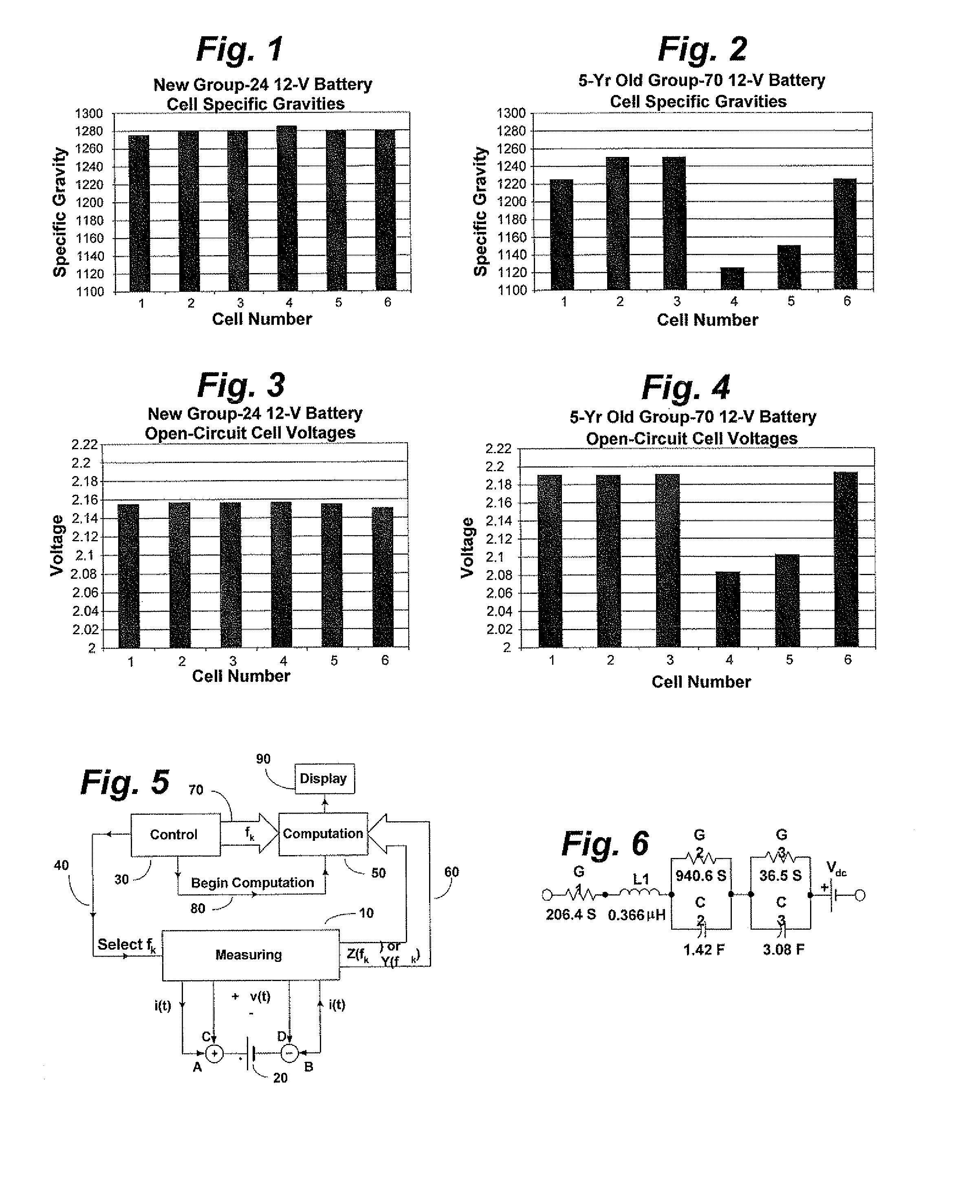Method and apparatus for detecting cell deterioration in an electrochemical cell or battery
a technology of electrochemical cells and batteries, applied in the field of methods and apparatus for detecting cell deterioration in electrochemical cells or batteries, can solve the problems of battery bad, cell deterioration, battery bad, etc., and achieve the effect of improving the quality of life and reducing the cost of replacemen
- Summary
- Abstract
- Description
- Claims
- Application Information
AI Technical Summary
Problems solved by technology
Method used
Image
Examples
Embodiment Construction
[0016]FIG. 1 is a bar graph disclosing specific gravities of the individual cells of a battery having very little cell deterioration. This battery is a brand-new Exide Dura-Start Group-24 12-volt automotive battery rated 525 CCA. It was fully charged. This battery possessed filler caps, so the cell electrolytes were readily accessible. One sees that the maximum gravity difference occurred between cells 1 and 4 and was only 10 points. That is well within the 50 point criterion allowed by the testing procedure described above. Thus, this battery would be considered “good” and could be returned to service.
[0017]FIG. 2 is a bar graph disclosing specific gravities of the individual cells of a battery having cell deterioration. This battery is a 5-year old AC Delco Group-70 12-volt automotive battery rated 770 CCA. It too was fully charged. Since this battery did not have filler caps, it was necessary to physically cut the top off of the battery to gain access to the electrolytes. One see...
PUM
 Login to View More
Login to View More Abstract
Description
Claims
Application Information
 Login to View More
Login to View More - R&D
- Intellectual Property
- Life Sciences
- Materials
- Tech Scout
- Unparalleled Data Quality
- Higher Quality Content
- 60% Fewer Hallucinations
Browse by: Latest US Patents, China's latest patents, Technical Efficacy Thesaurus, Application Domain, Technology Topic, Popular Technical Reports.
© 2025 PatSnap. All rights reserved.Legal|Privacy policy|Modern Slavery Act Transparency Statement|Sitemap|About US| Contact US: help@patsnap.com



